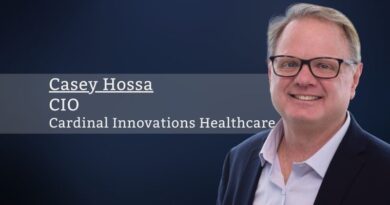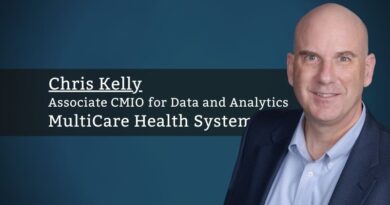Drowning in a Sea of Data? Six Ways to Translate Insight into Action
By Mitchell Morris, M.D., Executive Vice President, Advisory Services, Optum
None of us is lacking in data. It’s coming at us from every angle, all day long. In fact, 30 percent of the world’s stored data is generated by the healthcare industry, according to a 2012 Ponemon Institute survey. But it’s not doing much good if we can’t put it to use. The challenge for those of us in health care, whether we’re providing care or managing reimbursements, is finding practical ways to turn all those undiscovered insights into workflow changes that can help us improve quality while saving money.
I first worked on an enterprise data warehouse at a health system in the mid-’90s. Back then, I thought it was only a matter of time before everyone – clinicians, administrators, actuaries and technologists – would have better information at their fingertips, allowing them to make more informed decisions. More than 20 years later, we have made progress in health care, but we still lag other industries in finding smart ways to bring together siloed information and infuse insights into our workflow.
If you’re frustrated by your organization’s lack of speed or effectiveness at making data actionable, I’ve observed a few key characteristics among those who are consistently getting it right:
- Look at the tools, but not only the tools. Whenever I attend a big trade show like HIMSS, I’ll walk by hundreds of exhibitor booths, and at least half say they can provide “analytics.” In many cases, they are selling packaged analytics tools – many of which are not designed for the complexities of health care. As necessary as those tools are, they’re only a part of the equation. If your IT department is buying business intelligence tools and not considering how the insights they generate will be used throughout the enterprise, then you’re not getting the full picture. Focus on developing a data-driven culture, where the data science is embedded within and throughout the business.
- Remember people still matter. Data and insights are only as useful as the people who are acting upon them. Here’s a common complaint I hear from C-Suite IT leaders: “We have so much information, but it’s not telling me anything I didn’t already know, and no one is doing anything with it.” If the information isn’t being shared on an enterprise level with those who are empowered to be changemakers, then it’s no surprise the data is just sitting there. Without people to interpret results and implement change, it’s not adding value. Relentlessly recruit, train, and retain talented employees – not just data scientists, but also people throughout the business who can interpret the data. That old business adage about the importance of people, process and technology is still true today. Scattered information can help create a cohesive care model if it’s linked and organized in a usable way.
- Focus on the questions you’re not asking. There are industry leaders who are using more advanced techniques like advanced predictive modeling, machine learning and other applications of artificial intelligence. These tools differ from traditional analytics because you no longer need to know the question to get an answer – which has major potential impact for care delivery organizations and health plans. The difficult part is finding the skilled data scientists to optimize these capabilities for your organization’s needs.
We all know that hospital readmissions are upsetting to patients and drive unnecessary costs. To tackle issues like readmissions, our team of 26,000 multi-disciplinary professionals focuses on infusing healthcare intelligence into the solutions we offer. The healthcare intelligence comes from a unique combination of data, analytics and applied expertise, and we call this OptumIQ. This approach allows our clients to uncover data patterns that help identify people who are most in danger of readmission. According to an Optum analysis, hospitals and health systems often look to obvious sources of readmission yet miss 39 to 62 percent of the burden of illness. Having access to integrated electronic health record and adjudicated claims data as well as the tools and talent to extract answers without specific questions can help an organization tailor their outreach to the specific needs of a subset of patients. This data analysis can lead to systemic changes like instituting interventional programs where nurses visit patients’ homes to check on their medications, take vital statistics and assess socially related health factors. It’s interesting to note these nursing programs are often underwritten by health plans, not health systems because they have shown to be such a key factor in improving quality and lowering costs.
- Check your bias. You know who your changemakers are. But if the insights they need are buried deep in the IT department then business and clinical change can’t happen. Your organization must operate with a bias toward action, ensuring the integration and empowerment of key players who can create change in clinical, financial and operational sectors. One way to foster this bias and avoid drowning in data is to start by identifying top use cases, prioritizing where analytics can provide the greatest business value. Determine the specific data sources and data practices needed to deliver on those priorities.As you’re trying to foster one type of bias, you may want to curb another. If you’ve been operating with a “do-it-yourself” bias and haven’t seen the results you want, you might benefit from other organizations’ best practices. Is it time to move toward more professionally managed analytics, working with external consultants or technologists to help advance how you use data and advanced technology? Only you can answer that question, but it’s an important consideration for the future. Just be sure to find a partner who sees the full picture and applies technology from a perspective that encompasses every sector of the industry.
- Demand an ROI for everything, especially technology. If you’re embedding new technology or making investments, especially one with advanced analytics, don’t forget to establish clear and measurable goals. If a technology-enabled program isn’t aimed at providing a tenfold return on your investment, you shouldn’t consider it. You’ll need to measure frequently, adding new actions to the mix when you begin to see progress against your first set of metrics. AI should always have an ROI.
- Look ahead. As you capitalize on current information sources, plan for the data you’ll need going forward. Some important information you’ll use in the future will likely be socio-demographic data, like social determinants of health, and consumer preferences and behavior – so get ready today.
Following these six tenets may not always be easy, but they could help you turn current pain points into future gains – informing better decisions and discovering new solutions to long-standing challenges. If we can learn how to harness the power of data and insights as a tool for action and build those insights into the very fabric of the enterprise, we can find transformative ways to solve today’s most challenging healthcare problems.



